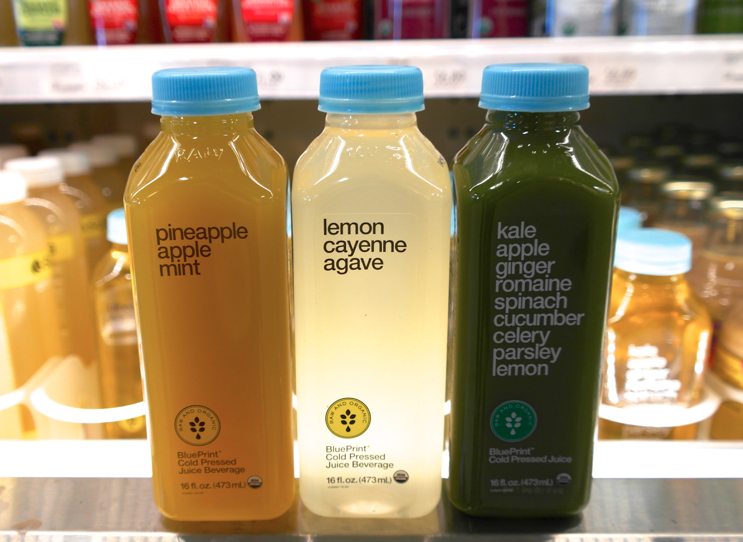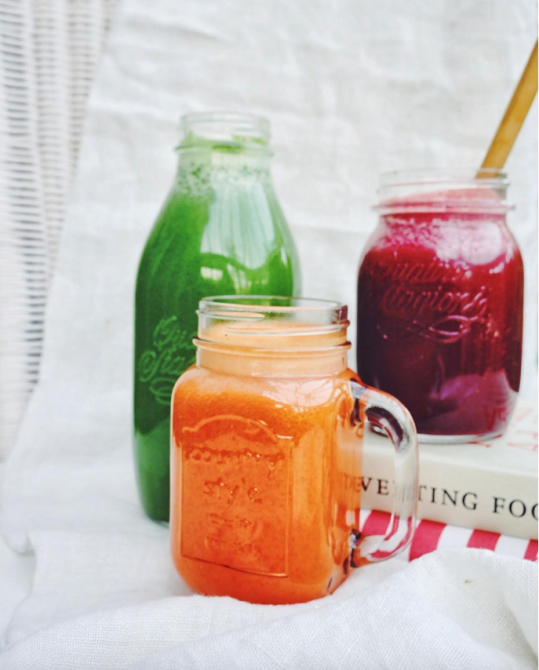New year, new you. Ate 300 donuts, 45 cookies, and 32 gallons of eggnog over the holidays? Well, don’t worry! Detoxify your body with this 3-day rejuvenating juice cleanse for the low price of $159.99!
This is the language used in advertising slogans that juice companies are selling their products with. But it’s filled with lies.
Since the juice cleanse fad began, tons of annoying juice bars with names like “Kale Yeah!” and “Whole Nutrition” have popped up for people who enjoy eating kale salads and quinoa to gather and discuss other obnoxiously healthy things like standing desks and SoulCycle. Only, instead of enjoying a nice kale salad like a normal person trying to eat a little healthier, everyone there is loudly slurping their overpriced juice with annoying names that always include a color, like “Green Machine.”
When you look at the menu of a juice bar, you realize that the only thing they sell is juice, unlike Starbucks, which sells some A++ desserts and actual sandwiches despite mainly selling beverages. So, upon entering a juice bar, you’re either having juice, coffee, or some faux healthy-sounding water for lunch like all your fellow juice bar patrons or going onto Yelp to find a restaurant that actually sells food.
If you decide to buy juice, you find out that it’s $10 for a bottle of “fresh, healthy, all-natural cold-pressed raw vegan” juice. Ten bucks can buy an entire sandwich with a side, a chipotle burrito (with guacamole), or even half a week’s worth of vegan dinners for two people, but people are still waiting in line, excited to hand their money to a marketing scam that convinces people that drinking kale out of a straw can be fun.
How much does it really cost to make juice and why does it need fancy packaging that probably cost more to make than the juice itself? You can’t even save money by buying juice in bulk because it expires in 72 hours. And you thought your meal plan was ripping you off.
Also, what does cold-pressed even mean? Does it improve the flavor? Is it the reason why I have to come here to buy it instead of making at home? I hope so, otherwise these suckers in line for juice need to realize that the juice bar just listed all the ingredients of each juice in the menu. THE INGREDIENTS ARE RIGHT THERE ON THE LABEL.

Photo by Jessica Kelly
Sure, you might say that you don’t have enough time to DIY — after all, you’re a busy college student! BUT I don’t have time for your lies. It only takes 5 minutes to make this stupid green smoothie, so it should take about the same amount of time to make your juice. And, in the time it takes for you to make juice and Instagram it, you could have also made something edible, like these apple chips or a tempeh kale salad. Plus, juice is, like, a billion dollars (see explanation above).
Juice also has a heck of a lot of fruit. Each bottle of Naked Juice’s Berry Blast has 5 blackberries, 4 raspberries, 4 strawberries, 3½ apples (!!!), and ½ a banana. Ignoring how weirdly precise those measurements were (5 blackberries, not 4 or 6), that’s a huge amount of fruit. And, instead of chewing it for an hour and enjoying each fruit, people obsessed with juice are just shoving it down their throats, sometimes cringing at the taste.
The only time not having to chew your food is beneficial is after your wisdom teeth are removed. I love having teeth and using them on a daily basis. Because every grocery store in the United States still sells bubble gum, I’m guessing that chewing is still in fashion and that Americans share similar views to mine. I’ll leave juicing to when I’m 204 years old and in need of dentures.
green juice sounds like the healthy version of wanting “blue” flavor popsicles.
— Lily Lou (@countingteacups) August 19, 2015
According to Urban Remedy, a juice subscription service, juice cleanses are a “short-term, fresh, raw, all-liquid diet intended to cleanse both the mental and physical state… The primary physical reason for a juice cleanse is to give the digestive system a break from processing heavy proteins and fat, in addition to filtering the liver, kidneys and gall bladder.” This isn’t completely true, though.
Despite the fancy buzzwords that come along with it, juice isn’t even healthy. You don’t need juice to detoxify your body because your body already does that. Weight lost from juice cleanses is only from not consuming enough calories, and it is often regained over time.
Plus, the benefits advertised for juice cleanses are always the same as the benefits of eating fruits and veggies: more vitamins and nutrients, clearer skin, etc. In fact, juicing even takes away the fruits’ fiber, which gives fruits texture and helps stabilize your blood sugar (meaning no more fluctuating energy levels throughout the day).
The only cleanse I need is one that gets rid of all the pictures of juice cluttering my Instagram feed. Juice bars have a clean, Whole Foods-esque aesthetic that makes juicing seem fun, a facade that’s more fun to talk about and post on Instagram than to actually drink. This “clean” and “healthy” image is perpetuated by the huge sums of money spent on advertising and branding the product. And because juice is so expensive, it’s become more of a status symbol than a foodie experience.

Photo courtesy of @anettvelsberg on Instagram
In December 2013 (yeah, that’s how long the juice cleanse fad has been going on), fellow Spoonie Stephanie Marshall did a 3-day juice cleanse, declaring it “[Worth it] if you’re looking to change the way you think about food and body sustainability.” But juice shouldn’t have to “manageable,” as she describes it, and you shouldn’t be surprised that your food tastes good.
You should enjoy the food you’re eating, not put up with it. And it’s definitely a bad sign if you need to “get busy” to avoid “[thinking] about how hungry you are.” If you’re still wanting to do a juice cleanse, I’m not judging you for it. Just be aware of how exaggerated all these claims are and that there are so many other ways to become healthier.
Juice is overhyped — it’s even more annoying than kale because it isn’t even healthy, just overpriced and advertised too much. I hate juice because it’s a giant fad that rips off tons of people through exaggerated claims and buzzwords. And don’t even get me started on souping.


